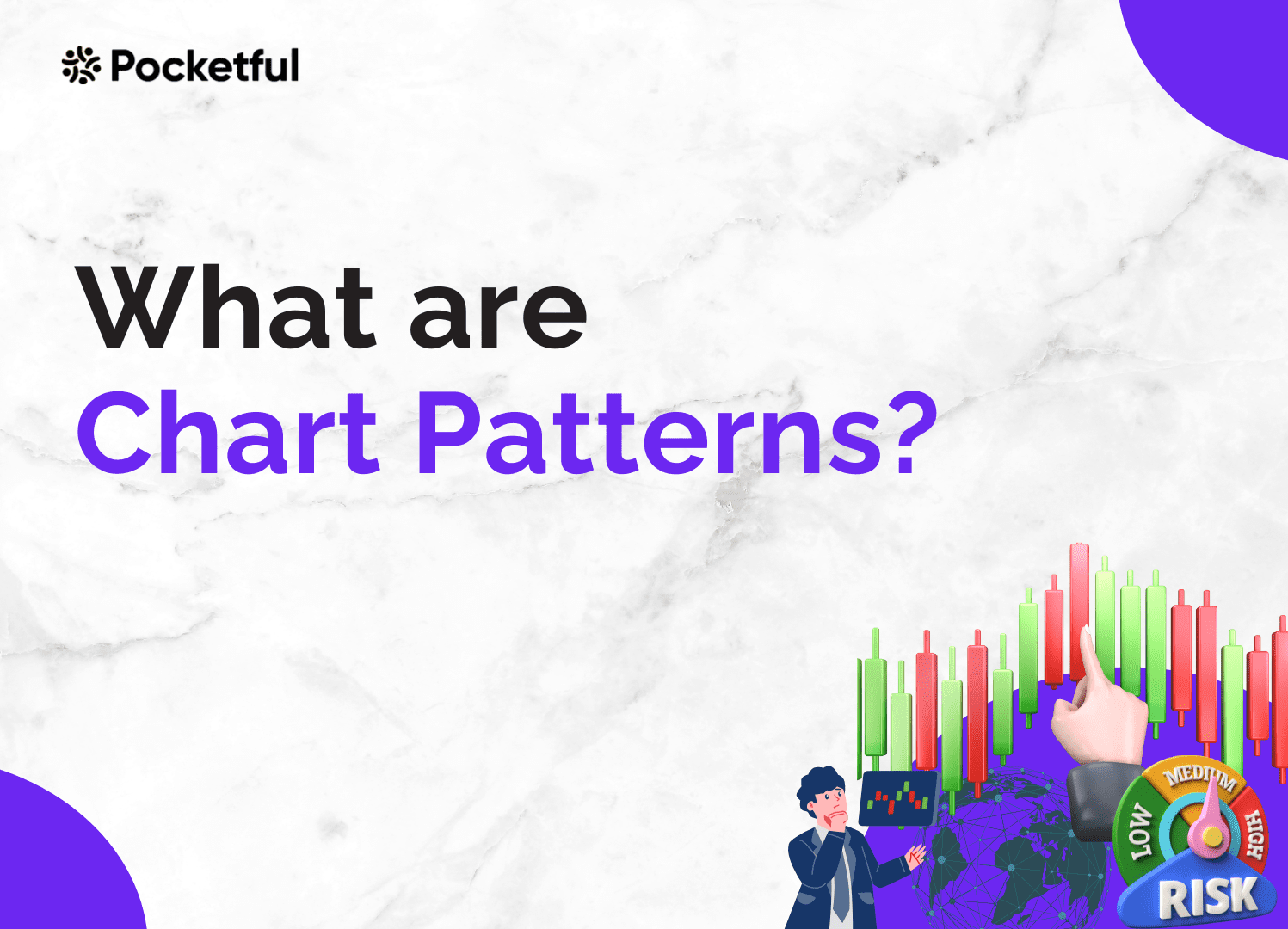| Type | Description | Contributor | Date |
|---|---|---|---|
| Post created | Pocketful Team | Apr-24-24 | |
| Add new links | Nisha | Mar-18-25 |
Read Next
- What is a Harami Candlestick Pattern?
- What is Average Traded Price in Stock Market
- What is MIS in Share Market?
- 7 Common Mistakes in Commodity Trading New Traders Must Avoid
- Brokerage Charges in India: Explained
- What is a BTST Trade?
- How to Do Algo Trading in India?
- What Is CMP in Stock Market?
- MTF Pledge vs Margin Pledge – Know the Differences
- Physical Settlement in Futures and Options
- List of Best Commodity ETFs in India
- Bullish Options Trading Strategies Explained for Beginners
- Best Brokers Offering Free Trading APIs in India
- Top Discount Brokers in India
- Best Charting Software for Trading in India
- Benefits of Intraday Trading
- What are Exchange Traded Derivatives?
- What is Margin Shortfall?
- What is Central Pivot Range (CPR) In Trading?
- Benefits of Algo Trading in India
Chart Patterns All Traders Should Know

When analyzing trading charts, certain formations appear repeatedly. Traders use these to identify potential trading opportunities. In this article, we’ll explore various chart patterns crucial for understanding the Indian stock market.
What is a Chart Pattern?
A chart pattern is a specific formation on a price chart that is repeated over time. By studying these patterns, traders attempt to predict future price movements based on historical outcomes. However, it’s important to note that past performance does not guarantee future results.
Types of Chart Patterns
Chart patterns can be broadly categorized into three types:
Continuation Patterns
These patterns indicate that the current trend will continue. Examples include flags, pennants, and triangles.
Reversal Patterns
These suggest that the current trend is likely to change direction. Examples include double tops, double bottoms, and head and shoulders.
Bilateral Patterns
These patterns indicate that the market could move in either direction, often due to increased volatility. Examples include symmetrical triangles.
Read Also: What are Candlestick Patterns? Overview and Components
Common Chart Patterns in Technical Analysis
- Ascending and Descending Staircases
These are basic chart patterns that indicate a clear trend. An ascending staircase shows a market moving upward with higher highs and higher lows. Conversely, a descending staircase indicates a downward trend with lower lows and lower highs. - Ascending Triangle
An ascending triangle is formed when a horizontal resistance line meets an ascending support line. It usually signals a continuation of an uptrend. - Descending Triangle
A descending triangle occurs when a horizontal support line meets a descending resistance line. It typically indicates a continuation of a downtrend. - Symmetrical Triangle
This pattern forms when two trend lines converge symmetrically. It can signal a continuation of the current trend or indicate potential volatility leading to a breakout in either direction. - Flag
Flag patterns are short-term continuation patterns that resemble a small rectangle sloping against the prevailing trend. Bullish flags slope downwards, while bearish flags slope upwards. - Wedge
Wedge patterns are similar to flags but have converging trend lines. A rising wedge is a bearish signal, while a falling wedge is bullish. - Double Top
A double top is a bearish reversal pattern that appears after a significant uptrend. It consists of two peaks at roughly the same level, signaling a potential downtrend. - Double Bottom
A double bottom is a bullish reversal pattern seen after a significant downtrend. It features two troughs at similar levels, indicating a possible upward trend. - Head and Shoulders
This is a bearish reversal pattern with three peaks: a higher central peak (the head) flanked by two lower peaks (the shoulders). It signals a trend reversal from bullish to bearish. - Rounded Top and Bottom
These patterns are reversal signals. A rounded top suggests a shift from an uptrend to a downtrend, while a rounded bottom indicates a transition from a downtrend to an uptrend. - Cup and Handle
This bullish continuation pattern resembles a cup with a handle. The cup forms a rounded bottom, followed by a smaller consolidation (handle) before a breakout.
How to Trade Using Chart Patterns
Confirm the Pattern
Wait for a pattern to confirm itself by watching for a breakout in the expected direction. Volume indicators can help confirm the validity of a pattern.
Set Stop Loss
Always set a stop loss to manage risk. Place it at a level where the pattern is deemed to have failed.
Choose a Profit Target
Determine a profit target based on the height of the pattern. For instance, if a flag pattern has a height of 50 points, set a profit target 50 points beyond the breakout level.
Read Also: Best Options Trading Chart Patterns
Conclusion
Understanding and recognizing chart patterns can significantly enhance your trading strategy in the Indian stock market. By identifying these patterns, you can make informed trading decisions and better manage risks. Remember, while chart patterns provide valuable insights, no pattern is infallible, so always use risk management strategies.
FAQs
Disclaimer
The securities, funds, and strategies discussed in this blog are provided for informational purposes only. They do not represent endorsements or recommendations. Investors should conduct their own research and seek professional advice before making any investment decisions.
Article History
Table of Contents
Toggle